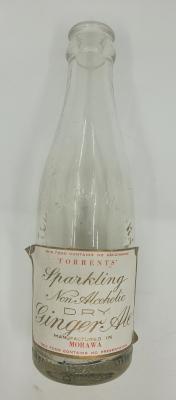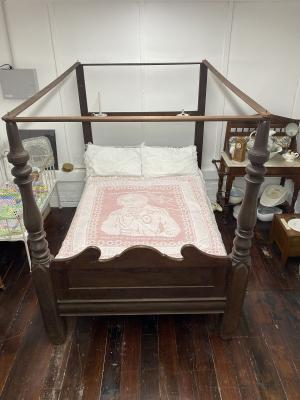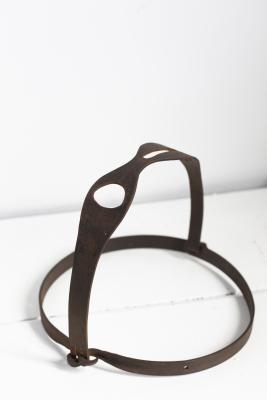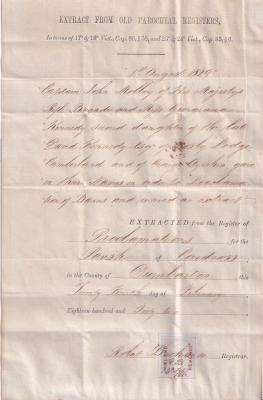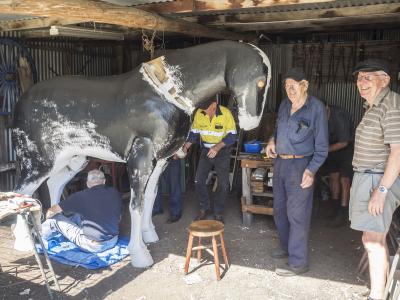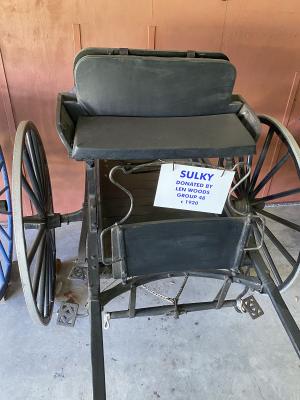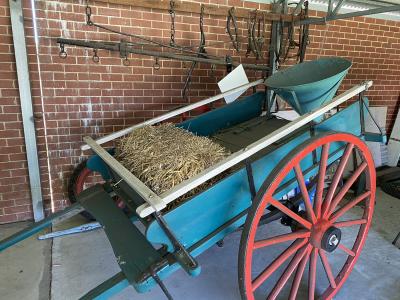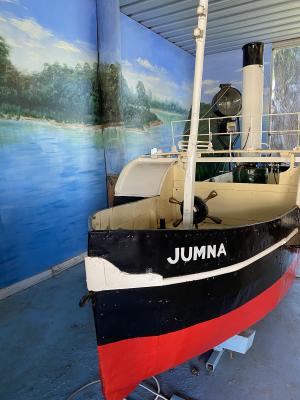Universal Bread Maker #8
c. 1906Manually-operated, table-top dough mixer, kneader and raiser. Consists of a tapered circular container, made in three pieces with two folded, vertical seams and bottom folded up at edge, that has two side handles curved inward above its heavy, rolled rim and a shallow slot attached on bottom underside for a separate clamp that secures device to table or horizontal support; a stamped, Y-shaped crosspiece that snaps over the rim and has a central circular bearing to hold the dough hook and curved crank with black-painted wooden knob; and a cover placed on top of the crosspiece, stamped with instructions in raised sans serif letters. Assembly held together by turn latches.
Wikipedia states "Landers, Frary & Clark was a housewares company based in New Britain, Connecticut. It operated from 1865 until its assets were sold to the General Electric company in 1965. They manufactured a wide variety of products over the years, including stainless steel bull-nose rings and electric ranges, kitchen scales and vacuum bottles, window hardware and ice skates, mouse traps and percolators, can openers, corkscrews, cutlery, straight razors, aluminum cookware, and thousands of other products. Many of these items were marketed under the brand Universal. Some of the non-electric kitchenware assets were acquired from G.E. in 1984 by Universal Housewares, Inc./Universal Trading, Inc., who still market "Universal" meat grinders and coffee mills."
Details
Details
Put in all liquids first then flour.
Turn 3 Minutes
Raise in pail
After raising
Turn until dough forms a ball
Take off cross-piece lift out dough with kneader - is embossed inside concentric circles on lid of container.
No. 8
Universal
Bread Maker
Awarded Gold Medal
St Louis Exposition
1905
Made By
Landers, Frary & Clark
New Britain Conn. U S A
is embossed inside a large circle on container side.
Whilst wheat and flour production did not flourish in The Vasse, Henry Chapman built the first commercial flour mill in Western Australia in the 1850s at his property Inlet Park. After Chapman Mill was proved unsuitable for wheat grinding it was used to grind locally grown grains like rye and other coarser grains. Chapman Mill is still standing today.
This Bread Maker was acquired by the Ayers family in the 1930’s but was rarely used as it made 6 loaves too many!
Here is an actual No. 8 Universal Bread Maker recipe for French Bread.
Sift on a table three pounds best quality flour. Measure out a quart warm water, pour it in the bread maker, reserving half a cup. Crumble a half-ounce fresh, firm compressed yeast into a cup, half fill the cup with lukewarm water and thoroughly dissolve yeast. Pour the dissolved yeast into bread maker, adding two heaped teaspoons salt and sifted flour. (Liquids should always be poured in first.) Briskly turn crank for three minutes, or until dough forms a smooth compact ball about the kneading rod. Put on cover of machine, place over a dry cloth and set in temperature of 80 degrees to rise during night. After rising turn crank until dough forms a ball about kneader again, then loosen crosspiece and lift kneader and dough out of pail together. Push dough off kneading rod, cut into four equal parts, shape and place in baking tins and set to bake for about an hour.
Other items from Busselton Historical Society
- Sparkling Ginger Ale Bottle - Torrents Morawa
- Sparkling Lime & Soda Bottle - Torrents Morawa
- The "Yelverton" Bed
- Chastity Belt
- Proclamation of Banns - Captain John Molloy and Georgiana Kennedy
- Sleeper Cutters Dray Display
- Len Woods Sulky
- Spring Cart with Super Spreader
- Doctors Buggy and Horse Display
- Charles Sutton Spring Cart
- Lister Electric Comb and Cutter Grinder
- Scale Model - Paddle Steamer "Jumna"
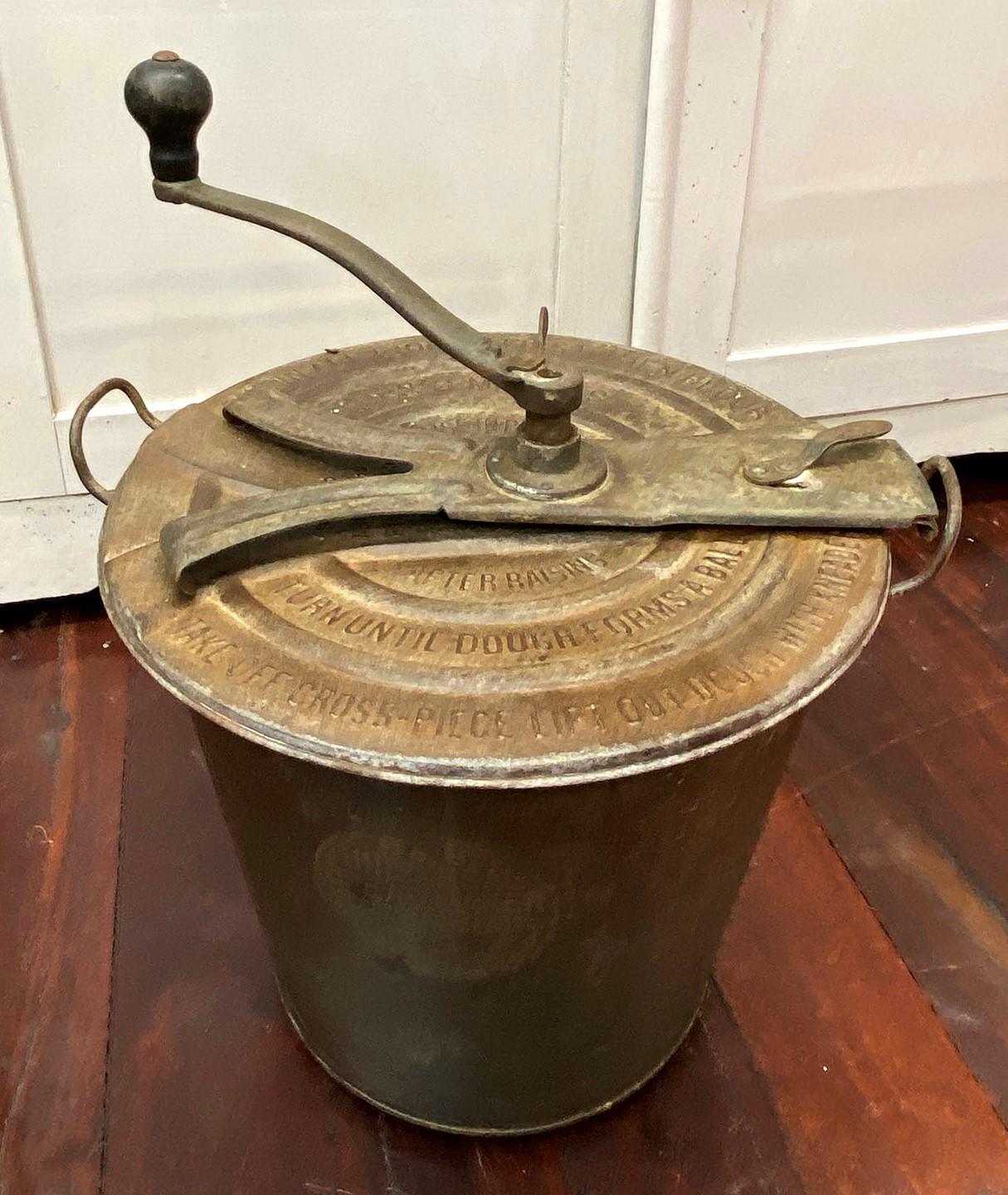
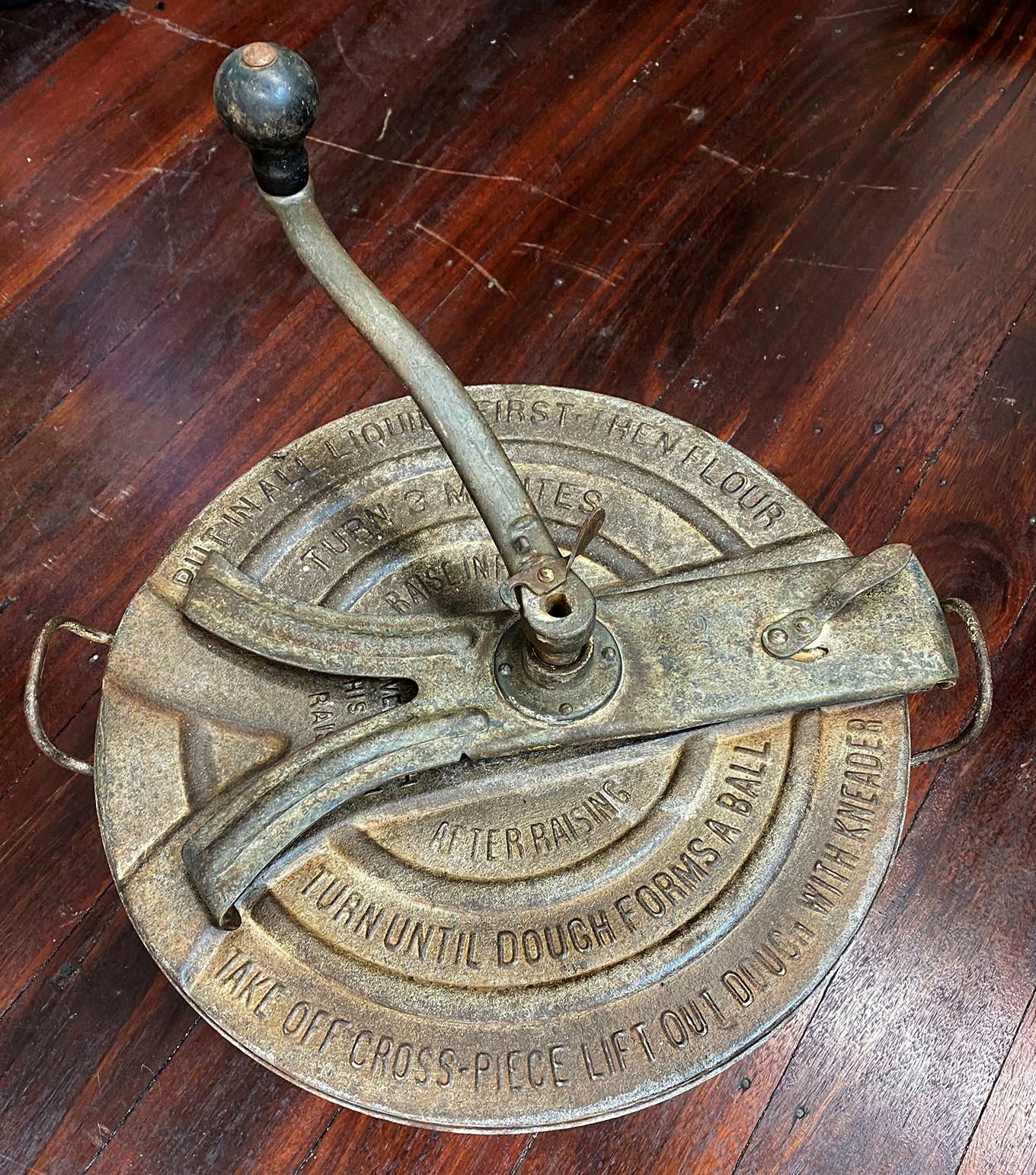
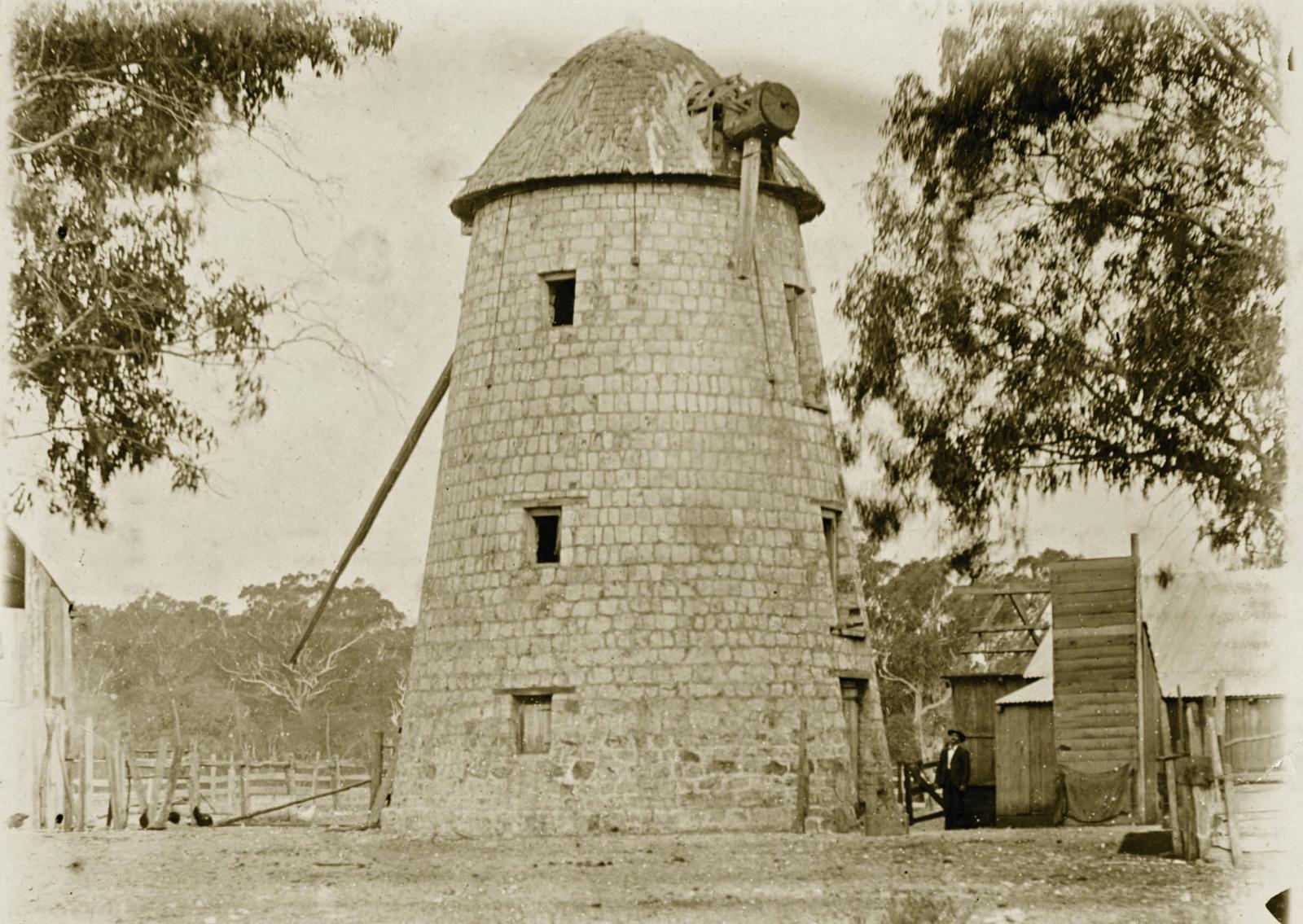
Scan this QR code to open this page on your phone ->

